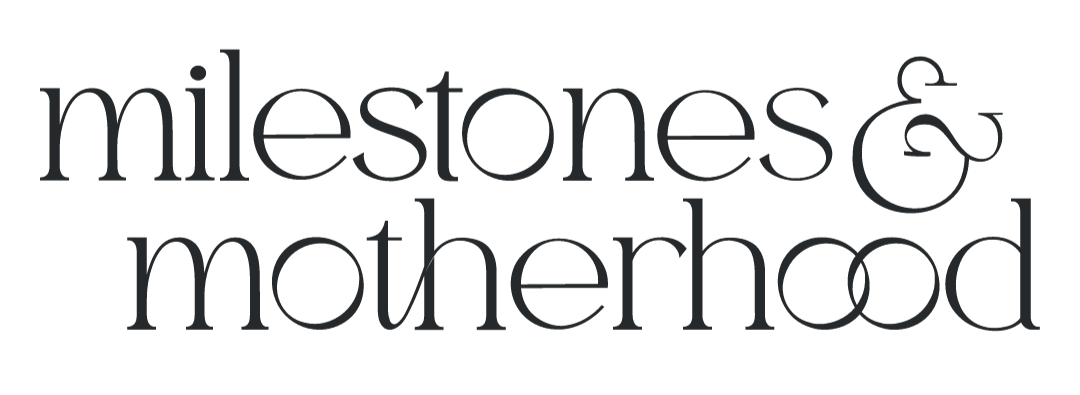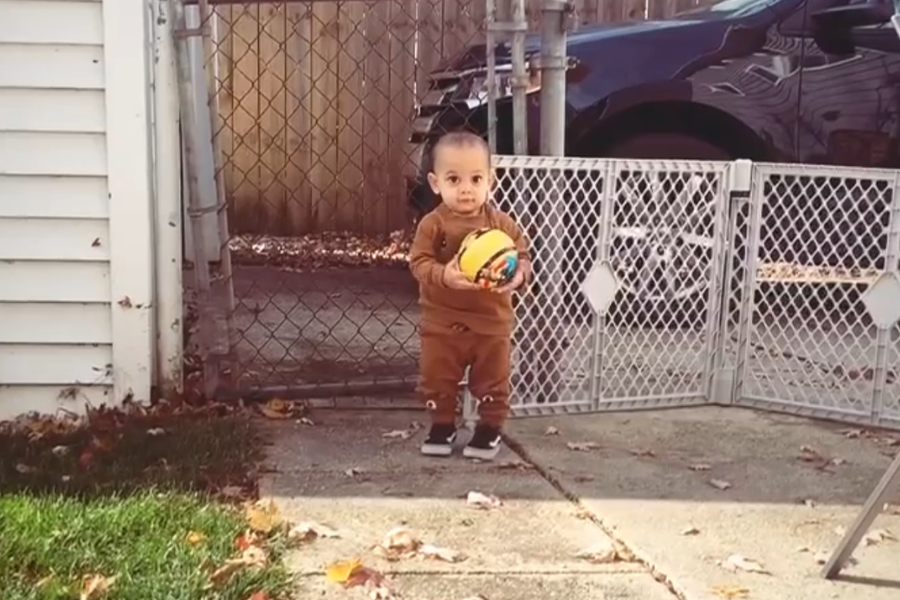What to Expect AFTER Walking
THIS POST MAY CONTAIN AFFILIATE LINKS, WHICH MEANS I MAY EARN A SMALL COMMISSION AT NO EXTRA COST TO YOU, IF YOU MAKE A PURCHASE THROUGH ONE OF MY LINKS. I ONLY SHARE PRODUCTS I TRULY LOVE AND USE FOR MYSELF OR WITH MY OWN KIDS AND PATIENTS. THANK YOU FOR SUPPORTING THIS SPACE!
“What are the milestones to expect once kids are walking?”
The short answer: so many!
The longer answer: Even though the milestones leading up to independent walking tend to get the most attention, there are SO many milestones that come after that which are really exciting as well! I’ll highlight 5 of my personal favorites here, but please know that there are lots and lots more beyond these as well!
RUNNING - When will my baby start to run?
Once your little one is walking proficiently, you’ll start to notice them becoming faster, more coordinated, and using a more mature walking pattern. Those toddling side to side steps become more forward & backward, with a narrow base of support, more trunk & pelvic rotation, and arms will come down from the ‘high guard’ field goal position to swing more naturally at the sides along with that trunk rotation. Many times, they will even start to become ‘sillier’ with their walking as they become more stable, exploring things like backwards walking, sideways walking, or different arm positions (like walking with their hands behind their back). Things like experimenting with tip toe walking, backward walking, sideways walking, and picking up the pace of their walk to an eventual run usually begin emerging around 3 months after independent walking is mastered*, and continue to become more mature and ‘adult like’ from there! (*mastered meaning they are using walking as their primary means of mobility, expected between 12-18 months of age.)
JUMPING - When will my toddler start to JUMP?
The average age for jumping with clearance of both feet is age 2. Some littles will do it earlier, and some a touch later and as with anything, development is a range and that is totally okay! As your little works towards jumping, there are lots of ‘ministones’, or signs that the big skill is coming - here’s some of my favorites for jumping;
Bouncing in standing (on a soft or hard surface) when jumping is modeled (knees bending only)
Bouncing in standing and rising onto toes- which preps the calf muscles for the big contractions needed to jump successfully
Bouncing in standing and lifting one foot while rising on toes
Leaping forward when jumping is modeled
Leaping OFF something like a step when modeled
And then - full blown jumping, which will then evolve into things like jumping forward, sideways, onto and off an object (like a step), and more!
Here is a video with tips to help encourage jumping!
STAIR CLIMBING - When will my child start to climb stairs in standing?
When it comes to stair climbing, the biggest thing to know is that it requires A LOT of single leg stance, which is also the catalyst to so many other higher-level gross motor milestones, especially exciting ones like skipping & hopping! ‘Single leg stance’ refers to the ability to stand on one leg and remain stable & upright enough to lift the other to perform a task, like stair-climbing, getting dressed in standing, kicking, and getting on/off a bicycle. Many littles will start climbing stairs in standing around 18 months (depending on leg length and step height), though they’ll require quite a bit of help, which is ok! Initially, they’ll need hand support on both sides and will often do a non-reciprocal step to pattern, meaning both feet are on each step before progressing to the next. Often times at this stage, they’ll tend to lead more with one leg over the other, and while we love to see symmetry between both sides of the body in early development (meaning what one side does, the other does as well - think like rolling both ways), if you’re seeing your little prefer to lead with one leg over the other in early stair climbing, it’s actually often MORE related to what side the hand support or railing is on and not a concern related to asymmetrical strength or stability.
From there, you can expect stair navigation to progress to needing LESS support at their hands and performing a reciprocal alternating feet pattern. This alternating feet pattern of stair climbing happens while going up stairs FIRST (because going up is easier than coming down due to the type of muscle contraction required!), then performing a reciprocal or alternating pattern going down the stairs LAST. While stair skills are also very exposure based, the ability to alternate feet going up and down stairs is expected by around 4 years of age. As I always say, don’t stress stair skills and prioritize stair safety more than anything - and remember, you can practice foundational stair safety skills in so many other ways- like stepping on/off step stools, on/off curbs, and even when making obstacle courses at home and stepping on/off obstacles!
Watch my stair safety reel here for supporting your little one with this skill safely!
Don’t have stairs and want to give your toddler somewhere to climb? Here is a list of some of my favorite large gross motor toys, including piklers and play couches!
Ball Skills- When will my child learn to throw, catch and kick?
Throwing, catching & kicking start to emerge before independent walking, with things like rolling a ball back and forth in sitting or throwing toys, food, or their plates off their highchair trays 🙃. Once a child is standing, those foundational play skills quickly evolve and become more intentional, targeted & advanced. Intentional throwing often begins as a push from their chest with both hands depending on the size of the ball, evolving to throwing with more purpose, using one hand either underhand or overhand, and becomes more targeted & accurate from there.
Catching evolves from a gross trapping of the ball against their chest with arms extended wide that is not successful in most attempts. From there, catching advances to successfully catching both large and smaller balls using more of their hands and arms, rather than their chest as hand eye coordination progresses. As mentioned above, kicking requires strength, stability & the ability to maintain single leg stance. It begins in early walking as more of a ‘walk’ into the ball, evolving into a targeted, purposeful kick as strength and stability progress. These changes all happen as a little one approaches the age of 3 years and continue to refine from there, so feel free to practice, but don’t stress it!
This reel will give you an idea of what this looks like and give you the timeframes for different ball skills!
We have loved these balls for learning ball skills through the years!
Rides a Tricycle/Bicycle- When will my child learn to ride a bike?
The ability to ride a bike, trike, balance bike or scooter are definitely higher level milestones, think AT LEAST 3 years old and older, and they’re the result of all of the 1-4 listed milestones happening and creating the environment for success! Once a child is walking, they may start to explore balance bikes, bikes with training wheels and/or trikes. Much of mastering two wheeled biking is exposure based- but the foundational skills are often present around 3 years of age, with average mastery of two wheeled bike riding (with no training wheels) between 3-7 years old! You can read my thoughts on balance bikes & find my favorite options in this blog!
All in all, know that big things are still coming, and try to enjoy watching those mini stones turn into the often less anticipated, but just as fun, milestones!
Looking for Developmental Support BEFORE Walking?
For developmental questions, tips and guidance related to milestones about tummy time, rolling & sitting, crawling and walking, check out KC’s developmental Masterclasses linked here.






